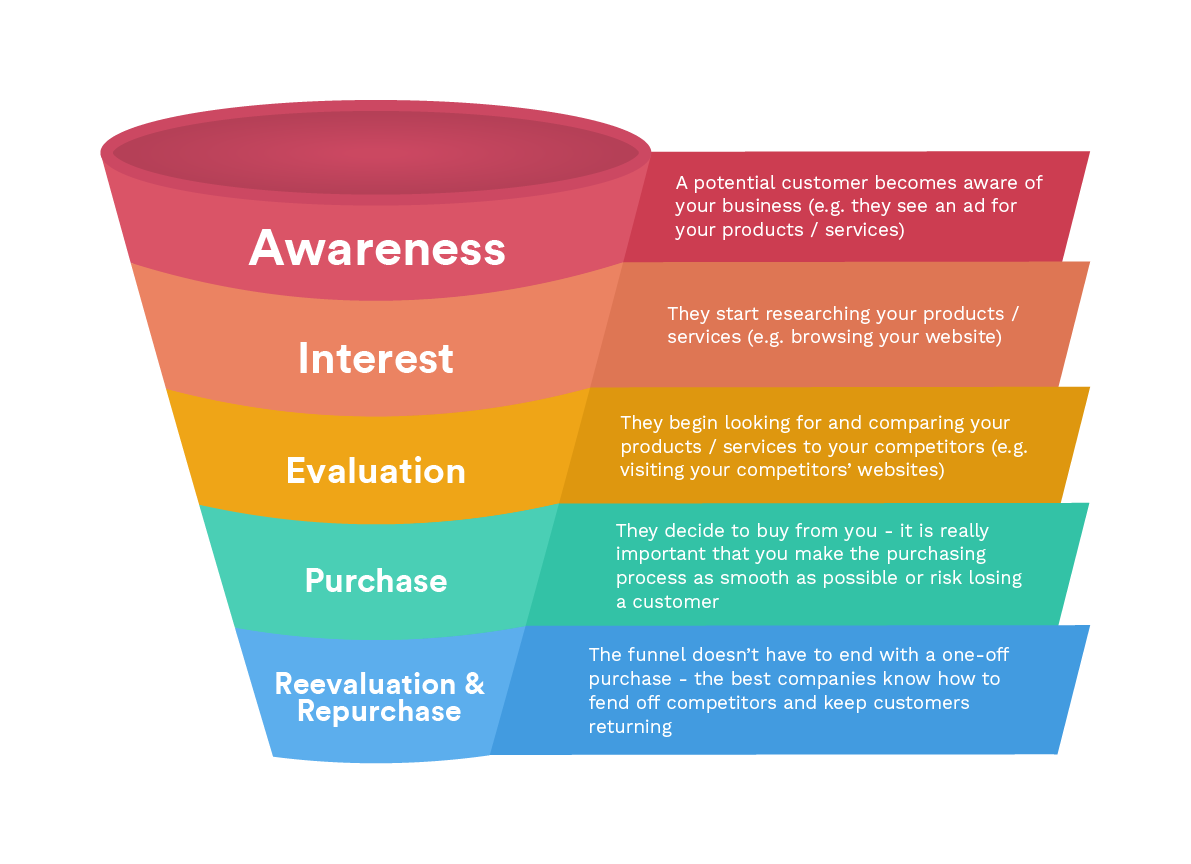The best websites always have their visitors in mind. Whether it’s driving more visitors to your website or learning more about them, you need to start asking yourself the following questions.
Who is visiting your website?
When asking yourself about the people visiting your website, the first question should always be about who your visitors are.
A good understanding of your website’s audience paves the way to improved messaging. It can also ensure that the look and feel of your website is appropriate.
As well as current visitors on your website, you should think about who you want your audience to be. Who in your target audience is being overlooked? How can you improve your content to better suit their needs?
Buyer Personas are a popular research tool. They enable you to represent the different needs and values held by your target audience. HubSpot provides a helpful My Persona Tool for building these personas.
Unless your business only operates online, be aware that your website’s visitors may differ from the consumers who discover and interact with your business through more traditional means (e.g. print advertisements, word of mouth).
Often your website will be one of many ways in which people interact with your business. Something to think about when creating your personas is how often and in what way will each persona use your website.

Why do people visit your website?
While many websites are designed to sell and generate enquiries, not all visitors are ready to buy on their first visit. It is often the case to have visitors who are browsing the available options or have spotted a link which has grabbed their attention.
Marketers will often talk about the Sales Funnel and how the above is “top-of-funnel” behaviour. What’s important here is your awareness of how a visitor’s behaviour, needs and wants will differ depending on how close they are to buying.
Visitors who are ready to buy will likely need different information to those who have recently discovered your business.
If you are monitoring your website’s traffic, have a look at your most visited pages, as well as the journey visitors take through your website. This will provide clues about why people are on your website.
What problems do the products or services on your website solve?
If the products or services listed on your website aren’t providing a solution, instead frame this question as: what needs do they fulfil?
For example, if you’re a restaurant owner, these needs can include a night-out for a special occasion, or a cheap, no-hassle meal for the family.
Framing your products or services in this way encourages you to show instead of tell. This makes your content more engaging and shows that you are aware of your audience.

How are people visiting your website?
You should also ask yourself how people are landing on your website and what devices they are using to access it.
There are many ways a visitor can discover your website. These include search engines, online and offline referrals, social media, email and direct traffic. You can read more about website traffic sources here.
So, why should you care about where your visitors come from?
As a small business, with limited time and resources, this information will help you decide where to promote your business. Paid channels have monetary costs, but both paid and unpaid channels will take up your time and energy. So it’s important to know where to invest!
It is also essential that your website suits the devices your visitors are using. Nothing is more frustrating to visitors than an online feature which doesn’t work on the device they are using. Or long loading times – most mobile-users won’t longer than a few seconds.
As modern day consumers, we are all about convenience. This often translates to being able to browse a website on any device.
Adapting your website for mobile devices often requires the help of a professional. However, there are tools available to you where you can quickly test your website. We recommend Google’s mobile-friendly test.
When are people using your website?
This question is often overlooked by small businesses – which is why it can give you a competitive edge!
If you know the time of day or week people are most likely to be on your website, you will know the best times to focus on promotions. This can include seasonal peaks in business too. For example, you may want to make changes to your website if your business has a Christmas rush period.
These are only five, very general, questions which apply to most sites and industries. Let us know what other things you would like to know about your site’s visitors by commenting below.
